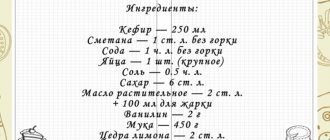Sharia ruling regarding Friday prayers
Friday prayer is a personal obligation for every adult free male Muslim of the mind.
And there is no excuse for anyone who leaves her. The proof of this is the following:
1. Words of the Almighty: “O you who believe! When called for prayer on Friday, then rush to the remembrance of Allah and leave trading. It would be better for you, if only you knew” (Collection, 9).
2. The words of the Prophet (peace and blessings of Allaah be upon him): “Either people will stop leaving Friday prayers, or Allah will certainly seal their hearts for them, and then they will certainly be among those who neglect . [Narrated by Muslim]
Virtues of Friday
Friday is the best day of the week. Allah chose Friday for this community after other communities were ignorant of this day.
And many hadiths mention the virtues of Friday:
1- “The best day on which the sun has ever risen is Friday: on it Adam was created, on it he was introduced into Paradise, and on it he was taken out of it . [Narrated by Muslim]
2- From Abu Hurayrah, may Allah be pleased with him, that the Prophet (peace and blessings of Allah be upon him) said: “Whoever performs ablution properly, and then comes to Friday prayer and listens to the imam, remaining silent until he complete the sermon, and then pray with him, his sins committed between this and the previous Friday prayer, as well as for another three days, will be forgiven...” [Narrated by Muslim]
3- From Abu Hurayrah, may Allah be pleased with him, that the Prophet (peace and blessings of Allah be upon him) said: “Five prayers, performing Friday prayer after the previous one and fasting in each subsequent Ramadan after the previous one atone for what happened between them, if there were no serious sins . [Narrated by Muslim]
Prayer of three and four rak'ahs
You can learn how to perform a Maghrib prayer of three rak'ahs by following this link, a prayer of four rak'ahs is performed similarly to a prayer of two rak'ahs, except that during the second sitting of the second rak'ah only dua Tashahud , and only in the second sitting of the fourth rak'ah are read in order (as in a two-rakah prayer): dua Tashahud and Salavat, and then dua for fitna and protection from the torment of the grave and the final greeting is said as at the end of the prayer.
It is also necessary to take into account that in the third and fourth rak'ahs, only Surah Fatiha is read in the qiyam, without additional suras.
How to perform lunchtime zuhr prayer in 4 rakats can be found here.
Conditions for the validity of Friday prayers
1. Time.
If the Friday prayer is performed before or after the allotted time, it is invalid. And the time of Friday prayer is the time of lunch prayer.
2. Availability of an appropriate number of people. One person cannot perform Friday prayers.
The smallest number for performing Friday prayer is three people.
3. Residence in a certain area. That is, if people live in a certain area, be it a village or a city, and do not wander depending on the season, then they must perform Friday prayer.
As for nomads living in the steppes or deserts (for example, Bedouins) and changing their place of residence depending on the season, they do not have such an obligation to perform Friday prayers in such temporary villages.
And even if they want to do Friday prayer in such villages, it will not be valid.
4. Preceding two sermons with prayer, since the Prophet (peace and blessings of Allaah be upon him) always addressed people with two sermons before performing the Friday prayer.
Friday prayer time
Done in a team
The Friday prayer performed by the inhabitants of the deserts and steppes in their temporary settlements is not valid.
Content
- 1 Five times daily prayer
- 2 Obligatory prayers 2.1 Janazah prayer
- 2.2 Juma prayer
- 2.3 Eid prayer
- 3.1 Avvabin
- 4.1 Individual prayer
Two parts of the khutbah
Sharia ruling regarding the two parts of the khutbah
`Two parts of the khutbah are obligatory, and they are also one of the conditions for the validity of Friday prayer.
If the majority of those who come to perform Friday prayers understand Arabic, then the sermon is given in Arabic, as this is part of the guidance of the Prophet (peace and blessings of Allaah be upon him).
This also encourages people to study the language of the Quran. If the majority of those present do not understand Arabic, then there is nothing blameworthy in the fact that the sermon is given in a publicly accessible language.
After all, the purpose of preaching is to edify and teach, and not to simply pronounce words.
At the same time, someone who addresses people with a sermon in a language other than Arabic should try to mention verses and hadiths also in Arabic, so that his sermon is valid from the position of those scholars who consider the Arabic language to be an essential element of preaching.
What makes a sermon more complete?
Some scholars believe that the Friday sermon has no specific pillars.
Therefore, from their position, any sentences and phrases that are popularly called a sermon are sufficient to fulfill this duty.
However, there are some points that make the sermon more complete (according to another group of scholars, some of the following points are the pillars of the khutbah):
1. Praising Allah.
2. Pronouncing two testimonies.
3. Blessing of the Prophet, may Allah bless him and grant him peace.
4. Call to fear of God.
5. Reading something from the Koran.
6. Exhortation.
Desirable actions when addressing people with a sermon
1. Addressing people from the minbar.
2. Greeting people before ascending to the minbar.
3. Dividing between the two parts of the khutbah by sitting for a short time.
4. Brevity of the sermon.
5. Making du'a.
Obligatory prayers: order of performance by men (VIDEO)
Namaz, as you know, is one of the most important pillars of Islam. Through prayer, a servant of Allah worships his Lord through body and spirit.
In the Holy Book of Islam and the Noble Sunnah of the Final Messenger of the Almighty (s.a.w.) there are many references to the importance of prayer for believers. Thus, in Surah “Spider” our Creator actually commands us to perform prayer:
Read what is revealed to you from the Scripture and perform prayer. Indeed, prayer protects from abomination and reprehensible (29:45)
The practice of Sunni Islam rests on four madhhabs, the presence of which marks the flexibility of the entire religious system. In this material we will tell you how prayer is read by men within the framework of these generally accepted theological and legal schools in Sunnism. Due to the fact that the Hanafi madhhab dominates among Russian-speaking Muslims, video material on the procedure for performing prayer according to this particular theological and legal school will be presented as an illustration.
Let us remind you that the mandatory conditions for recognizing a prayer as valid are: a person’s professing Islam and his spiritual fullness, coming of age (from the point of view of Sharia), prayer at a strictly established time for it (the schedule of prayers for cities of the Russian Federation and CIS countries is presented here), the presence of taharat, cleanliness of clothing and the place where namaz is performed, observance of the aura (so that the private parts are not exposed during prostrations), turning to the Qibla (Kaaba), the person’s intention to read namaz.
Let us describe the step-by-step performance of prayer using a specific example with a video.
The order of reading the prayer
(using the morning example)
This prayer includes two rak'ahs of sunnat and farda. The believer must initially, standing aloud or silently, pronounce the intention (niyat) to perform morning prayer. Next it says takbir tahrim - “Allahu Akbar!” (“Allah is great!”). This type of takbir indicates the beginning of prayer. After it, a person is prohibited from uttering extraneous words and making movements not directly related to prayer. Otherwise, it will not be considered completed.
It is important to pay attention to how the hands are positioned during takbir tahrim. The Hanafi and Maliki madhhabs affirm the need at the sunnah level for men to raise their hands to the back of their heads and touch their earlobes with their thumbs, while in the Shafi'i and Hanbali schools this is not necessary. After this action, the dua-sana is read:
SubhanakAllahumma wa bihamdika, wa tabarakasmuka, wa taala jadduka, wa la ilaha gairuk
Translation: “Glory and praise be to you, Allah! Your name is pious, Your greatness is above all. And there is no one worthy of worship except You."
Let us note that within the framework of the Shafi'i madhhab another dua-sana is used
Uajyakhtu wajhiya lil-lyazi fataras-samauaati wal-ard, haniifam-muslima, wa ma ana min al-mushrikin, innas-salati wa nusuki, wa makhyaya, wa mamati lil-lyahi rabbil-'alamin, la sharika lyakh, wa bi zalika Umirtu wa ana minal-muslimin
Translation: “I turn my face towards Him who made the heavens and the earth. And I'm not a polytheist. Truly, my prayer and my good behavior, life and death belong only to Allah, the Lord of the worlds, Who has no partner. This is exactly what I was ordered to do, and I am one of the Muslims (who submitted to the Almighty Creator).”
At this moment, according to the madhhab of Imam Abu Hanifa, men should place their hands below the navel. The thumb and little finger of the right hand clasp the wrist of the left. In the Shafi'i madhhab, the hands should be above the navel, but below the chest. Malikis usually have their hands down. In the Hanbali madhhab there is no consensus on where exactly to place the hands - below or above the navel. The solution to this issue is left to the discretion of the most devout.
Rakaat No. 1
Standing - kyyam
Following the dua-sana, the formulas “taauz” are read: “Aguzu bil-Lyahi min ash-shaitan ir-rajim” (“I seek refuge in Allah from [the filth] of the stoned devil”), basmallah: “Bismillayah ir-Rahmaan ir-Rakhim” (“In the name of Allah [I start a business]”) and the first surah of the Koran “Fatiha”. Then any other surah or consecutive Quranic verses (at least three). An example of an additional Qur'anic text that can be chanted in the first rak'ah is Surah Kausar:
Innaa agtainaa kyal-kyausar. Fasalli li-rabbikya wa-ankhar. Innaa shaa niyakya huval-abatar (108:1-3)
Translation of the meaning (according to E. Kuliev): “We gave you Abundance (the river in Paradise, which is called al-Kawsar). Therefore perform prayer for the sake of your Lord and slaughter the sacrifice. Truly, your hater will himself be childless.”
The vertical position of the person praying when reading “Fatiha” and other parts of the Koranic text is called “kyyam” (standing).
Bow bow - hand'
Next, the believer makes a bow from the waist (ruku' or rukug), rests his palms with slightly spaced fingers on his kneecaps, as shown in the photo, trying to keep his back straight parallel to the floor, and three times pronounces to himself the words: “SubhanaRabbial-Gaziym” (“Prechist my Great Lord"). Then you should get out of the ruku' state into a vertical position with the words: “SamigAllahu li-man hamida” (“Allah hears the one who pronounces praises”). Then the worshiper pronounces to himself the formula: “Rabbana lakal-hamde” (“O our Lord, praise be to You”). When exiting the waist bow, the person’s arms are lowered along the body.
Let us note that in the Shafi'i and Hanbali madhhabs, before starting the bow, a person must raise his hands, as in the case of takbir tahrim among the Hanafis and Malikis. At the same time, for the latter, this movement within prayers with an even number of rakats is uncharacteristic.
Prostration - Sujud
The next element of prayer is sajd (or sajdah) - prostration with the words tabir tahrim. Opinions in different madhhabs differed on how to perform this action. Most Muslim scholars of different schools, relying on the Sunnah of the Grace of the Worlds of Muhammad (s.g.w.), stated that first the knees are lowered to the floor, then the hands and, finally, the head, which is located between the hands. In the Shafi'i madhhab, hands are placed at shoulder level. The fingertips must be kept not torn off the floor and directed towards Kyibla. There is no need to close your eyes in Sujud.
Sajda symbolizes the submission of the faithful to the will of the Almighty. In fact, this is the main element of prayer - a person lowers his most important and highest part of the body (head) to the very bottom (floor/ground). It is necessary that both the forehead and the tip of the nose touch the surface, and that the toes do not leave the floor. In this position, the words “Subhana Rabbial-Aglya” (“Pure is My Lord, Who is above all”) are pronounced three times. The worshiper leaves the sujud with the takbir “Allahu Akbar.” At the same time, first he raises his head, then his arms and sits down on his left leg. In a sitting position, the hands are placed on the hips so that the fingers touch the knees. The believer remains in this position for several seconds, after which he again bows to the ground according to the algorithm described here.
Exit from sajda in odd rakats is carried out in such a way that first the worshiper lifts his face from the floor, then his hands. The person returns to a vertical position (with the words “Allahu Akbar”), similar to the qiyam of the first rak’ah. Thus, the second rak'ah of prayer begins.
Rakaat No. 2
In qiyam, Surah “Fatihah” is again read first, followed by any other sura or at least three successive verses. However, these must be different passages from the Holy Book from those used in the first rak'ah. For example, let’s take Surah “Ikhlas”:
Kul hu Allahu ahade. Allahu samade. Lam yalide wa lam yulade. Wa lam ya kul lahu kufuan ahade (112:1-4)
Translation of the meaning: “Say: “He is Allah the One, Allah the Self-sufficient. He did not beget and was not begotten, and there is no one equal to Him."
Tashahhud
In the second rak'ah, the Muslim makes bows and bows to the ground, similar to those performed in the first rak'ah. The only difference is that after sujud, the worshiper remains in a sitting position - quud (in this case, the right foot is positioned perpendicular to the floor, and its toes should be directed towards Qiybla, while the left foot lies freely, pressing its upper part to the floor under the weight of the worshiper) and says to himself dua tashahhud:
At-takhiyatu lillahi was-salauatu uat-tayibat. As-salamu galaikya, ayukhan-nabiyu, wa rahmatullahi wa barakatuh. As-salamu alaina wa ala gyybadillyahis-salihin. Ashkhadu alaya-ilayaha illallahu wa ashhadu an-na Muhammadan gabuduhu wa rasulyukh
Translation: “Salutations to Allah, prayers and excellent expressions, peace be upon you, O Prophet, and the mercy of Allah and His blessings, peace be upon us and the righteous servants of Allah. I bear witness that there is none worthy of worship except Allah, and I bear witness that Muhammad is His servant and His messenger.”
A desirable action (mustahab) when sitting and reading tashahhud is considered to be raising the index finger of the right hand while reciting to oneself a fragment of the shahada about faith in the Almighty (“Ashkhyadu alaya-ilayaha illallahu”). On the next phrase (“wa ashkhadu an-na Muhammadan gabuduhu wa rasulyukh”) you need to lower your finger and return the brush to its original state.
namaz-naglyadno.jpg
Salavat
Following the tashahhud, if the prayer consists of two rak'ahs (for example, sunnat and fard in morning prayer, sunnat in midday, evening and night prayers), salawat is read. This is actually a prayer for the Final Messenger of God (s.g.v.), consisting of two similar parts:
Allahumma salli 'ala Muhammadin wa 'ala ali Muhammad. Kamaa salayta 'ala Ibrahiima wa 'ala ali Ibrahiima, in-nakya Hamiyidun Majid. Allahumma barik 'ala Muhammadin wa 'ala ali Muhammad. Kamaa barakta 'ala Ibrahiima wa 'ala ali Ibrahiima, in-nakya Hamiyidun Majid
Translation: “O Allah, bless (mention with praise among the angels) Muhammad and the family of Muhammad, as You blessed Ibrahim and the family of Ibrahim. Verily, You are Worthy of Praise. Glorious! O Allah, send blessings (continue to exalt) on Muhammad and the family of Muhammad, as You did on Ibrahim and the family of Ibrahim. Verily, You are Praiseworthy, Glorious!”
At the end of salavat, a verse from Surah “Bakara” is read:
Rabbanya attina fid-dunya hasanatan wa fil akhirati hasanatan, ua kyina gazabannar (2:201)
Translation of the meaning: “Our Lord! Grant us goodness in this world and goodness in the Hereafter, and protect us from torment in the Fire.”
Salam
Following this, the worshiper, alternately turning his face left and right and looking at his shoulders, says salam:
As-Salamu halaykum wa rahmatullah
Translation: “Peace be upon you and the mercy of Allah.”
There are many opinions as to who exactly the greeting is addressed to. To summarize the different points of view, this action symbolizes the greeting that the believer pronounces to other worshipers, angels who record human deeds, and Muslim jinn.
At this point, the prayer, consisting of two rak'ahs, ends. After salam, the worshiper pronounces the word “Astaghfirullah” (“Forgive me, Lord”) three times and ends the prayer with a dua:
Allahumma antyas-salamu wa minkyas-salayam, tabaraktya ya-zal-jalayali wal-ikram
Translation: “O Allah, You are peace, and from You alone comes peace. Give us a blessing."
The person praying pronounces these words with his hands raised at chest level. After that, he lowers his hands, running them over his face.
The reading of the prayer is clearly demonstrated in the video.
Important Features
The parts of prayer that are sunnat are performed in such a way that the believer says all the words to himself. In the fard part things are a little different. Takbir tahrim, the rest of the takbirs when performing ruku and sajdah, salam are pronounced out loud. At the same time, in the fards of morning, evening and night prayers in the first pair of rakats, “Al-Fatiha” and an additional surah (or verses) are also read loudly to the worshipers.
Namaz, consisting of 4 rak'ahs, is performed in almost the same way. The only difference is that in the 2nd rak'ah after tashahhud, the worshiper must stand on the 3rd rak'ah and perform it as the first, and the 4th as the second with salawat, salam and the final dua. It should be noted here that in four-rakah fard prayers, during standing (qiyam) in the 3rd and 4th rak'ahs after Fatiha, not a single short surah is read. Instead, the believer immediately bows from the waist.
A similar procedure for performing namaz is characteristic of all Sunni madhhabs.
Number of rak'ahs, names and times of all five prayers
Morning prayer (Fajr) - two rak'ahs of sunnat and two fard.
Time: from dawn to early sunrise. The hadith of the Final Messenger of God (s.g.w.) states that “if a person manages to perform the first rak’ah of the morning prayer (meaning its fard part) before sunrise, then his prayer is counted” (Bukhari). If the believer is late, then this prayer must be re-read half an hour after the sun rises.
Midday prayer (zuhr, oila) - four rak'ahs of sunnat, four fards and two sunnat.
Time: from the moment when the celestial body ceases to be at the zenith (zaval), and until the moment when the shadow of the object is larger than itself. There is disagreement in the theological community on the issue of the release of the time for midday prayer. Imam Agzam Abu Hanifa believed that this moment occurs when the shadow of an object is twice its length. However, other Hanafis, as well as representatives of the other three madhhabs, insisted on the position that the time for the Zuhr prayer expires as soon as the shadow becomes larger than the object.
Pre-evening prayer (Asr, Ikende) - four fard rakats.
Time: from the moment when the shadow of an object is larger than itself, until sunset. There is a special formula for calculating the time of pre-evening prayer, thanks to which you can determine approximately when you should start praying. To do this, you need to know exactly when the celestial body leaves its zenith and at what time sunset occurs. This period is divided into 7 parts, of which 4 are allocated for the time of Zuhr prayer, and 3 for Asr prayer.
Evening prayer (Maghrib, Akhsham) – three fard rakats and two sunnat.
Time: after sunset and before the evening dawn disappears.
The prayer, which consists of three rak'ahs, is performed in such a way that after the tashahhud of the second rak'ah, the believer rises to the third. Within its framework, he silently recites Surah “Fatiha” and bows from the waist. This is followed by a way out of this situation, bowing to the ground and sitting (kuud), within which the believer reads tashahhud, salavat, a verse from Surah Bakara, says greeting (salaam) and completes the prayer.
Night prayer (isha, yastu) – 4 fard rakats and two sunnat.
Time: from the disappearance of the evening dawn to the beginning of the morning dawn.
Times when it is forbidden to pray
In one of his hadiths, the Mercy of the Worlds, Muhammad (s.g.w.), forbade the reading of prayer (salat):
1) when the sun rises until it rises, i.e. approximately 30 minutes after sunrise;
2) when the celestial body is at its zenith;
3) when the sun sets.
(A hadith with a similar meaning is cited by Bukhari, Muslim, an-Nasai, Ibn Majah).
Let us note that the sunnat parts of the five obligatory prayers mentioned above belong to the sunnah-muakkadah. These are the voluntary actions that the Prophet Muhammad (s.a.w.) never missed. However, there is a subtype of sunnah that the Final Messenger of the Almighty (s.g.w.) could sometimes miss. In fiqh, such actions are called “sunna ghair muakkada”. Let us list the cases when this sunnah occurs in relation to prayer:
1. Four rak'ahs before the evening (Asr) prayer, that is, before the fard part of the prayer.
2. Two rakats after the midday (zuhr) prayer, that is, after two rakats of the sunnah-muakkad of this prayer.
3. Two rakats after the night prayer (isha), that is, after two rakats of the sunnah-muakkad of this prayer.
4. Two rakats after Friday prayer, that is, after the last four rakats of the sunnah-muakkad of juma prayer.
May your prayer be accepted by Allah!
Actions prohibited in Friday prayer
1. It is forbidden to talk during the imam's sermon.
The Prophet (peace and blessings of Allaah be upon him) said: “If on Friday you tell your companion to “shut up” while the imam is delivering a sermon, then it will be counted as chatter to you . [Reported by al-Bukhari]
2. It is highly undesirable to step over people's heads, unless the person stepping over is an imam.
This is also permissible if there are empty seats in front and a person cannot reach them except through this.
Desirable actions on Friday
1. Reading Surah “The Cave”. The Prophet (peace and blessings of Allaah be upon him) said: “Whoever reads Surah “The Cave” on Friday, light will shine until next Friday . [Narrated by al-Hakim]
2. Numerous blessings of the Prophet, may Allah bless him and grant him peace.
It was narrated from Abu Mas'ud al-Ansari, may Allah be pleased with him, that the Prophet (peace and blessings of Allah be upon him) said: “Pray for me more on Friday, because truly, there is no one who would pray for me on Friday, so that his prayer is not shown to me . [Narrated by al-Hakim]
3. Complete ablution and use of incense. The Prophet (peace and blessings of Allaah be upon him) said: “Whoever performs ablution on Friday, purifies himself (as thoroughly) as he can, anoints (his hair) or anoints (his body) with the incense (that he has) at home, after what he will go (to Friday prayer), and will not share between the two (sitting next to each other in the mosque), and will pray as much as was predetermined for him, and when the imam comes out, he will remain silent, listening to him attentively, his (sins committed by him) will be forgiven )between this and the previous Friday . [Reported by al-Bukhari]
Notes[ | ]
- Janaza prayer
- Friday prayer (undefined)
(inaccessible link). Retrieved November 14, 2011. Archived October 1, 2011. - Holiday prayer (undefined)
. Umma.ru. Retrieved May 25, 2013. Archived May 17, 2013. - Method of performing holiday prayer (undefined)
. Assalam.ru. “The sunnah is to perform it in the mosque collectively. It is advisable to take the long road to the mosque and return along the short one. Eid prayers can also be performed at home. They should be performed by both women and those on the road.” Retrieved May 25, 2013. Archived May 10, 2013. - Holiday prayer is a gift from the Almighty to believers
- Avvabin (undefined)
. Spiritual Council of the Chuvash Republic. Retrieved April 22, 2013. Archived April 22, 2013. - Questions related to prayer (undefined)
. Madrasah (2011-28-07). Retrieved April 22, 2013. Archived April 22, 2013. - Ways to perform the Witr prayer
- Nafil prayers Archived copy of December 28, 2011 on the Wayback Machine
- Spirit Archived February 1, 2012 on the Wayback Machine
- ↑ 1 2
Ishraq
(undefined)
. Namaz.uz. Retrieved May 25, 2013. Archived May 8, 2013. - Salat al-kusuf (prayer during an eclipse) (undefined)
(inaccessible link). Retrieved November 14, 2011. Archived March 4, 2021. - ATTENTION! Total lunar eclipse June 15, 2011 Archived September 14, 2015 on the Wayback Machine
- What is istikhara? (unspecified)
(inaccessible link). AskImam.ru. Access date: September 8, 2013. Archived August 17, 2013. - Don't miss out on your reward!
- Namaz-tasbih
- Salat at-tasbih and salat at-tawba Archived copy of July 27, 2014 on the Wayback Machine
- Tarawih prayer
- Welcome prayer (unspecified)
(inaccessible link). Retrieved November 14, 2011. Archived August 17, 2011. - Namaz Hajjat - How to ask Allah using prayer? Archived January 24, 2012 on the Wayback Machine
- ↑ 12
Women's prayer - Women's prayer
- Woman's voice and singing (undefined)
. darulfikr.ru. — “Prophet S.A.S. said: “Reciting tasbih is for men, and clapping is for women” (meaning that if the Imam made a mistake in prayer, men should attract the attention of the Imam with the words “SubhanAllah”, and women should clap their hands). (Fath al-Qadir, 1/260). Retrieved May 25, 2013. Archived May 12, 2013. - Jamaat namaz (salat in a group) (undefined)
(inaccessible link). Retrieved November 26, 2011. Archived December 1, 2011. - Muhammad Gadzhiev al-Inchhi.
Collective prayer
(undefined)
. Islamdag.ru (October 3, 2009). - “The reward for prayer performed collectively is 27 times greater than for prayer performed individually.” Access date: May 25, 2013. Archived March 26, 2010. - Kuliev E.
Marriage and family
(undefined)
. Guliyev.org (April 5, 2005). - “It is advisable for women to perform the obligatory and all other prayers at home.” Retrieved May 25, 2013. Archived May 14, 2013. - Jama'at (collective Namaz)
- Uniting prayers, its types and degrees. Archived May 18, 2015 on the Wayback Machine
- Bulugh al-Maram, Book 2: Namaz, “Chapter 13: Namaz in times of danger” (unspecified)
(unavailable link). Retrieved November 14, 2011. Archived March 4, 2021.










